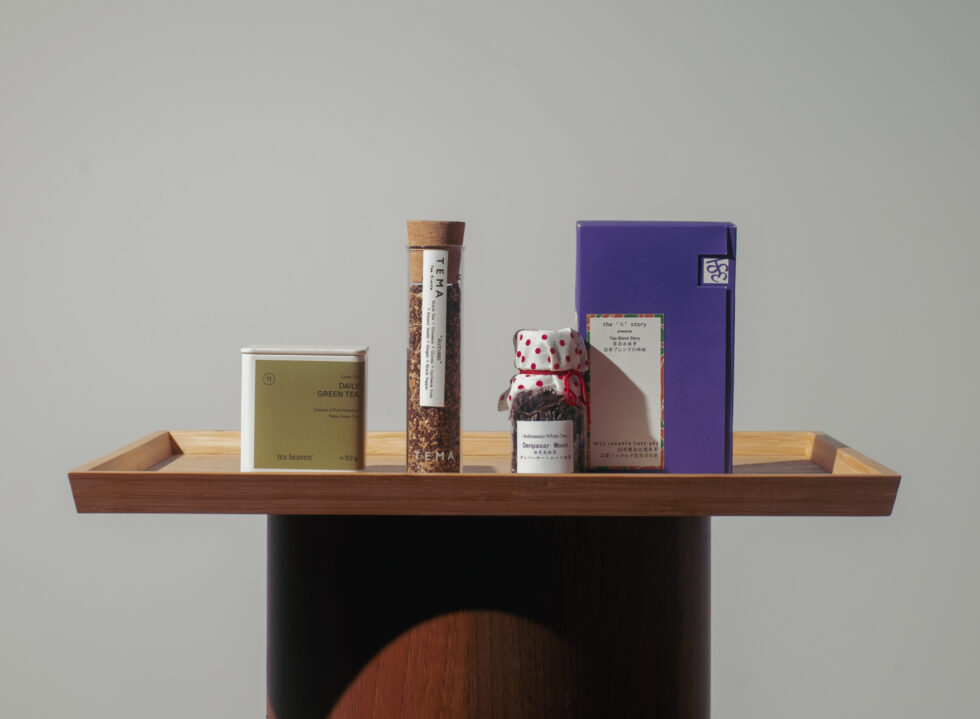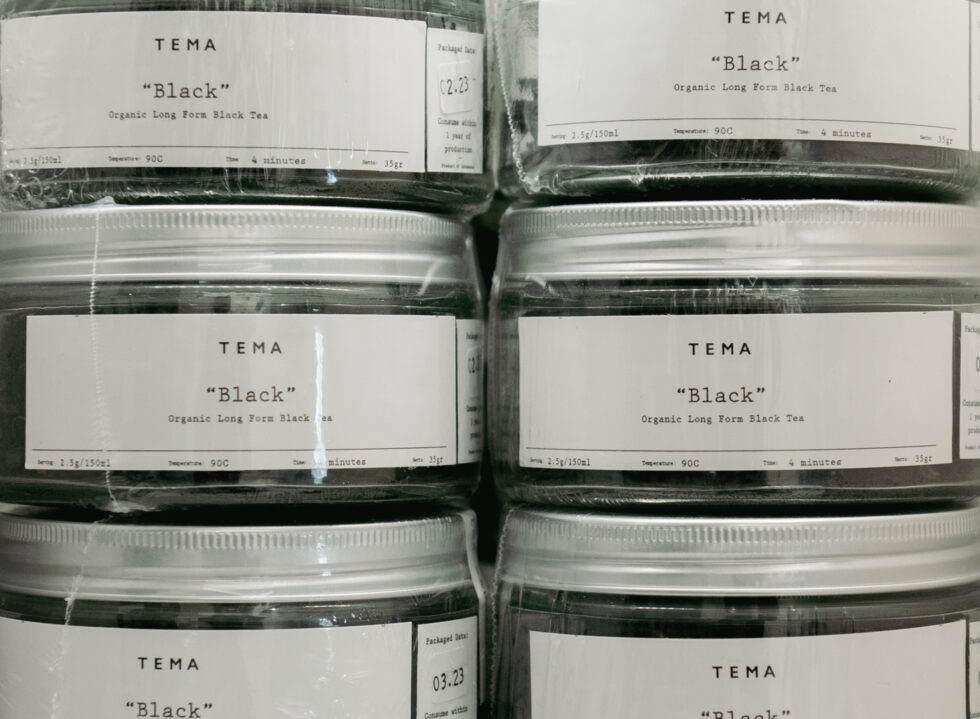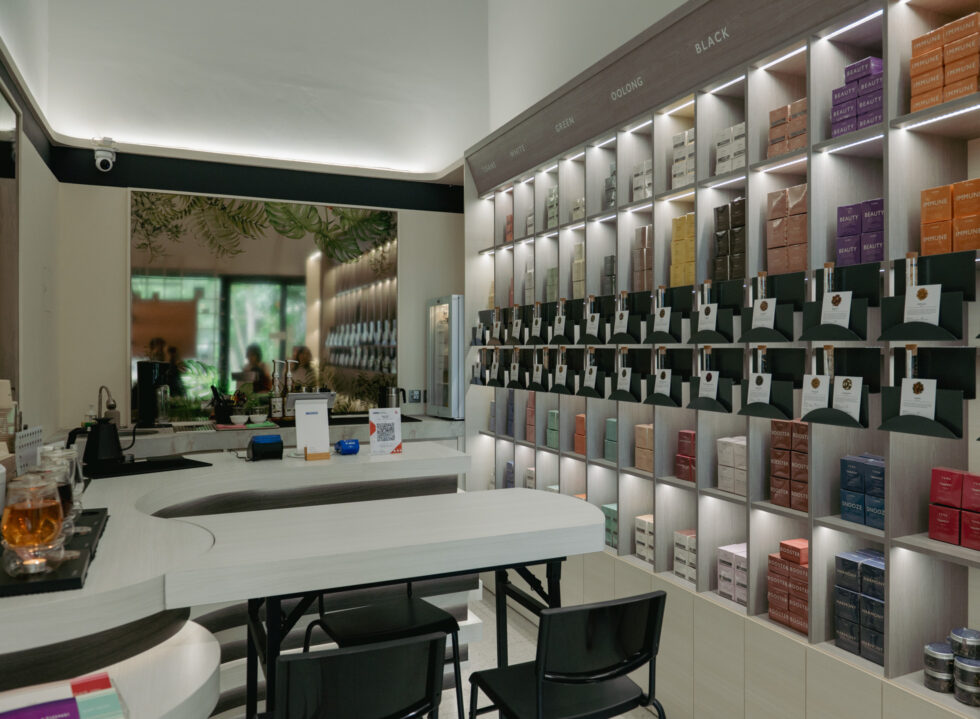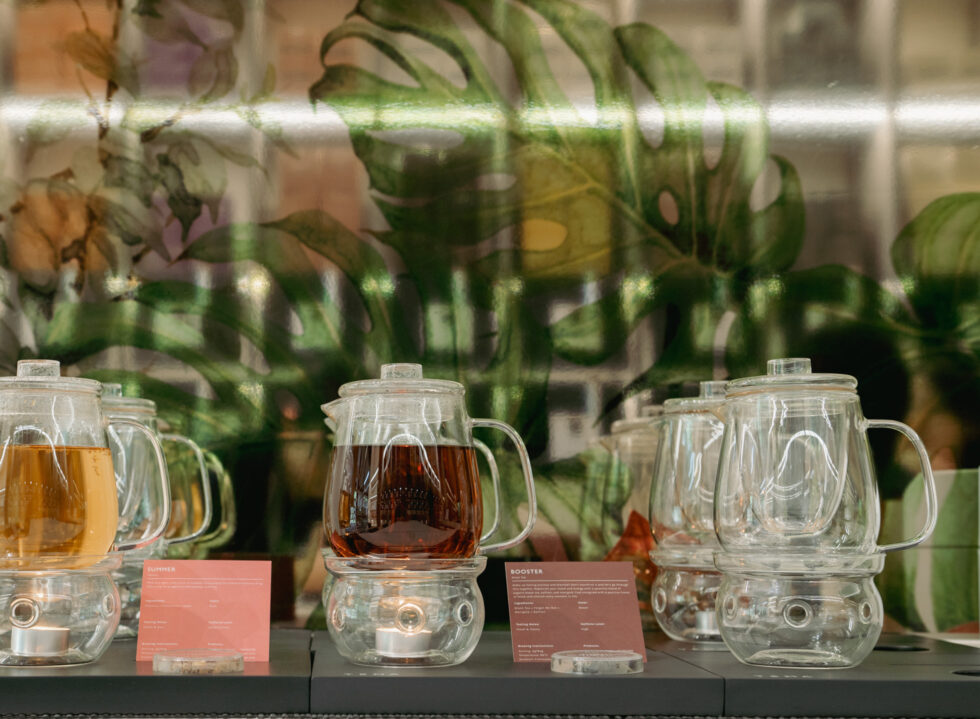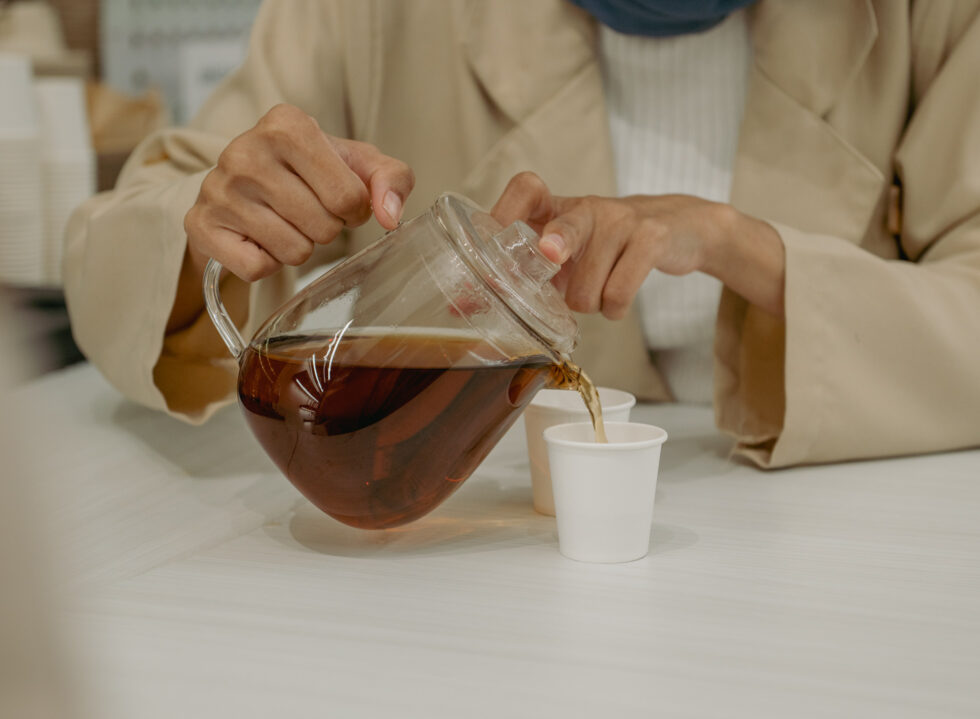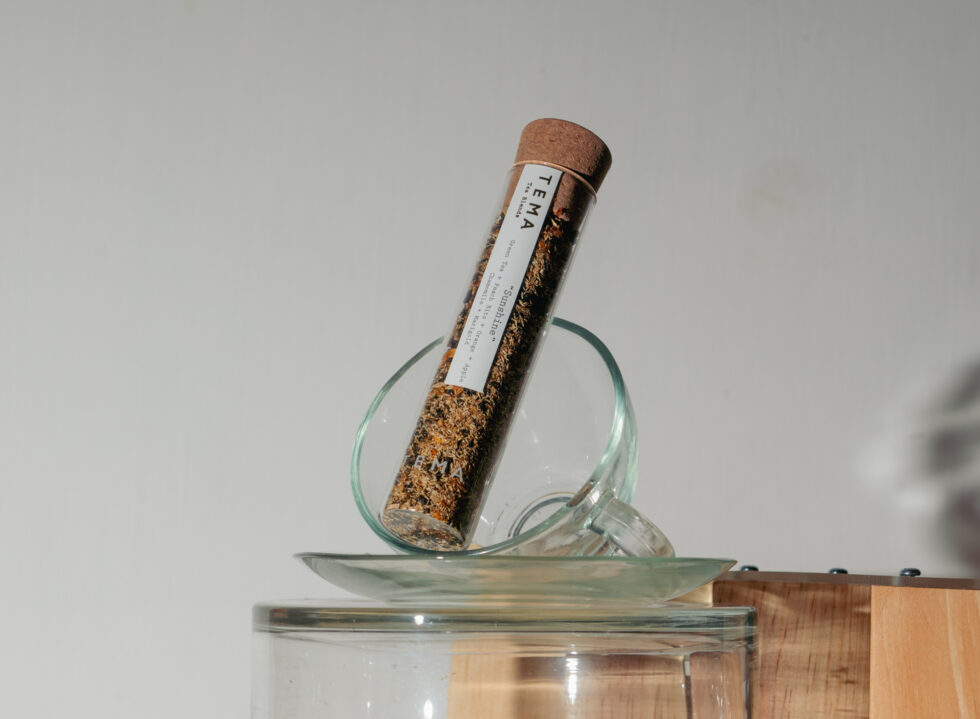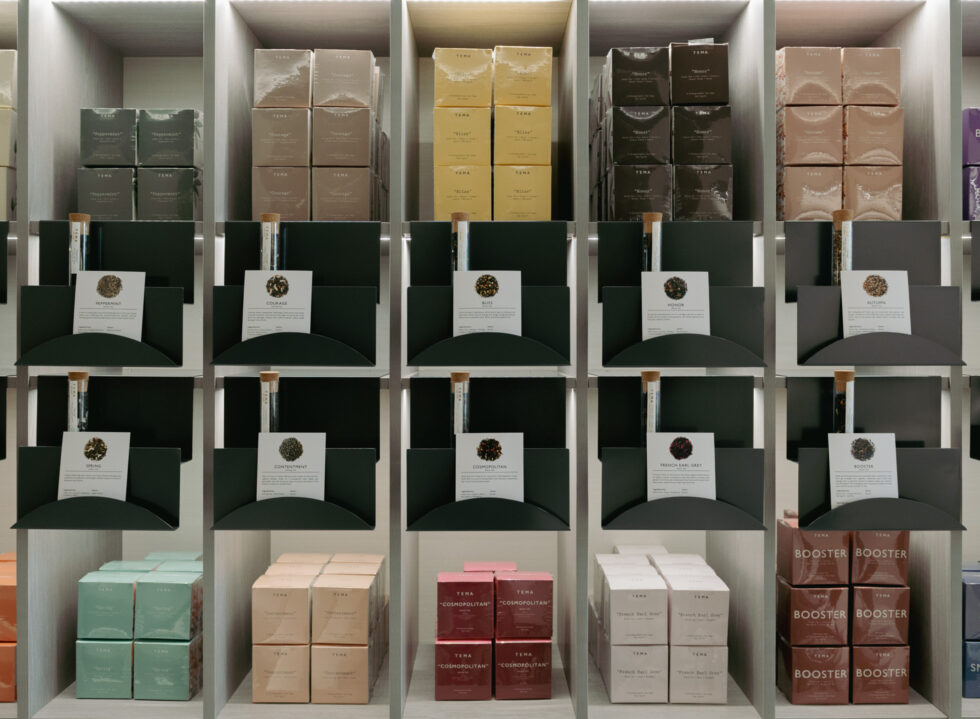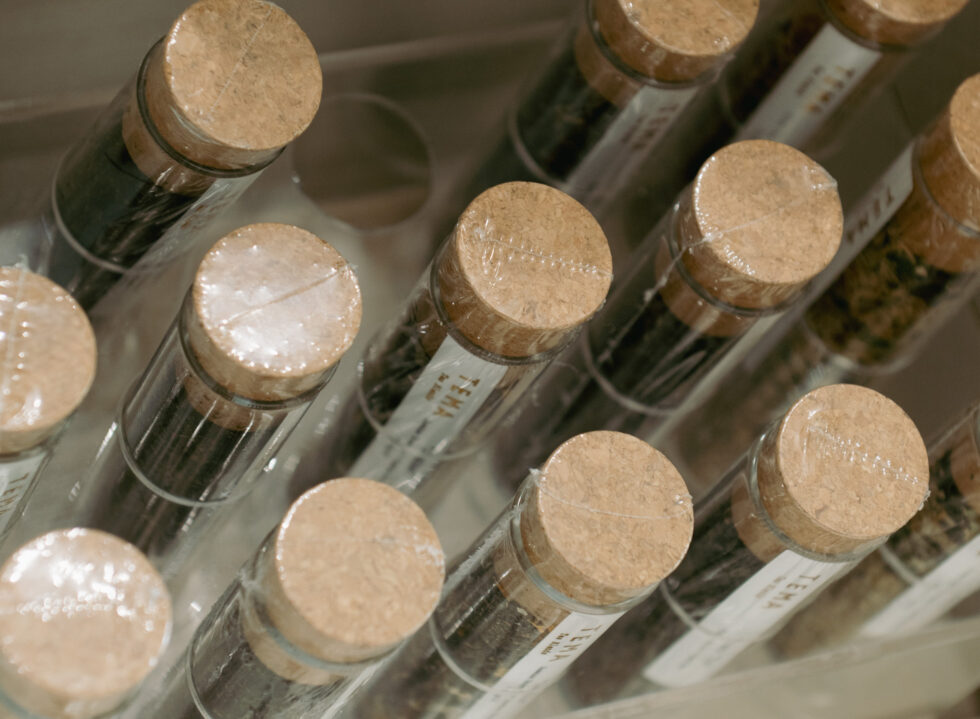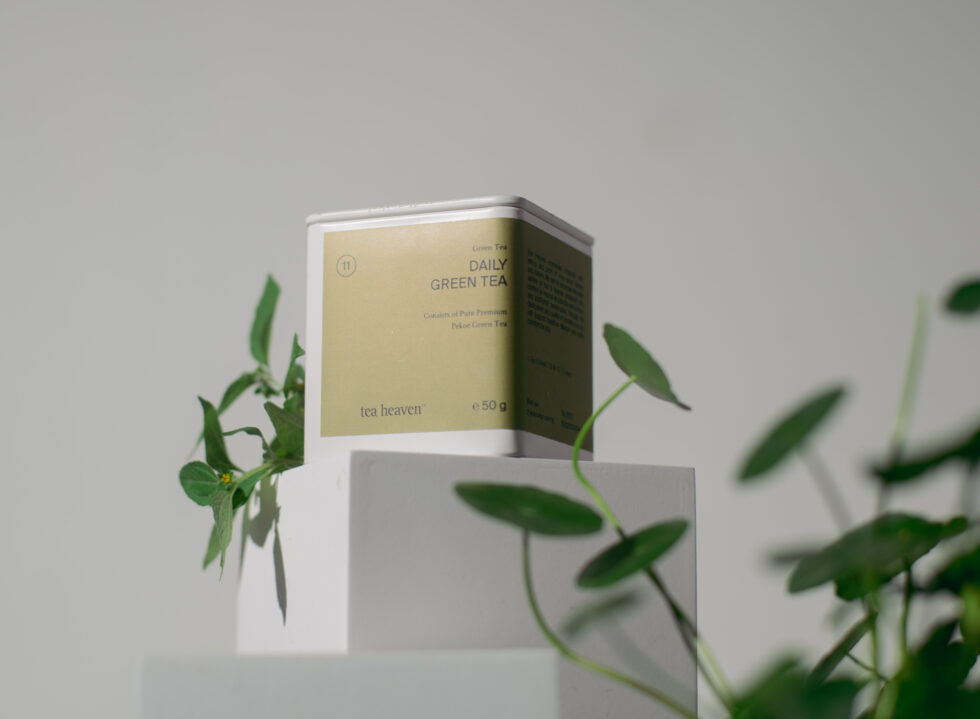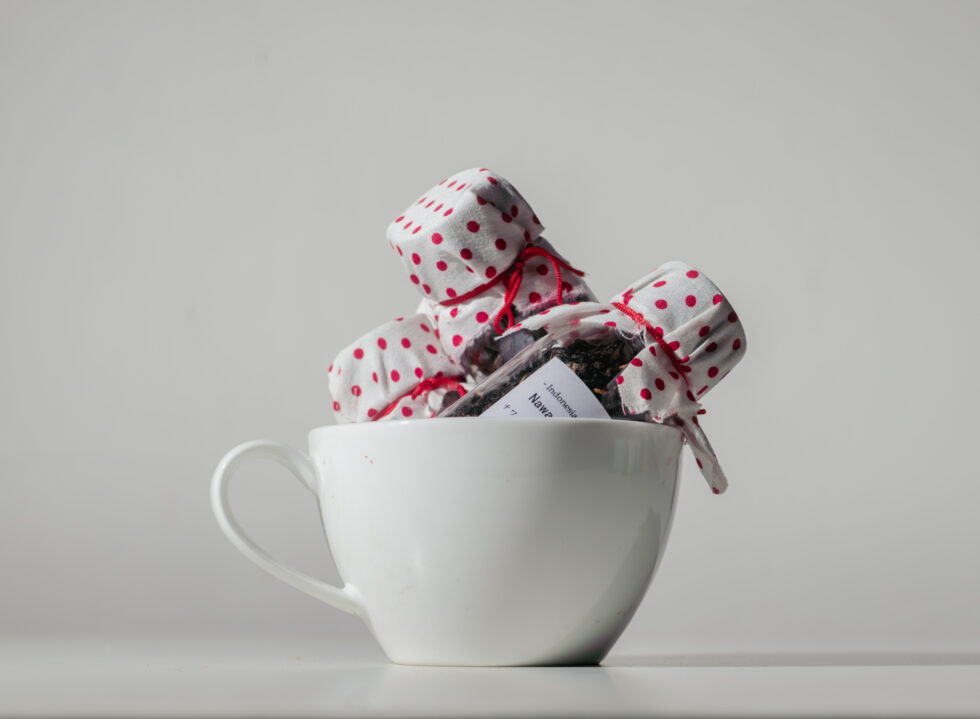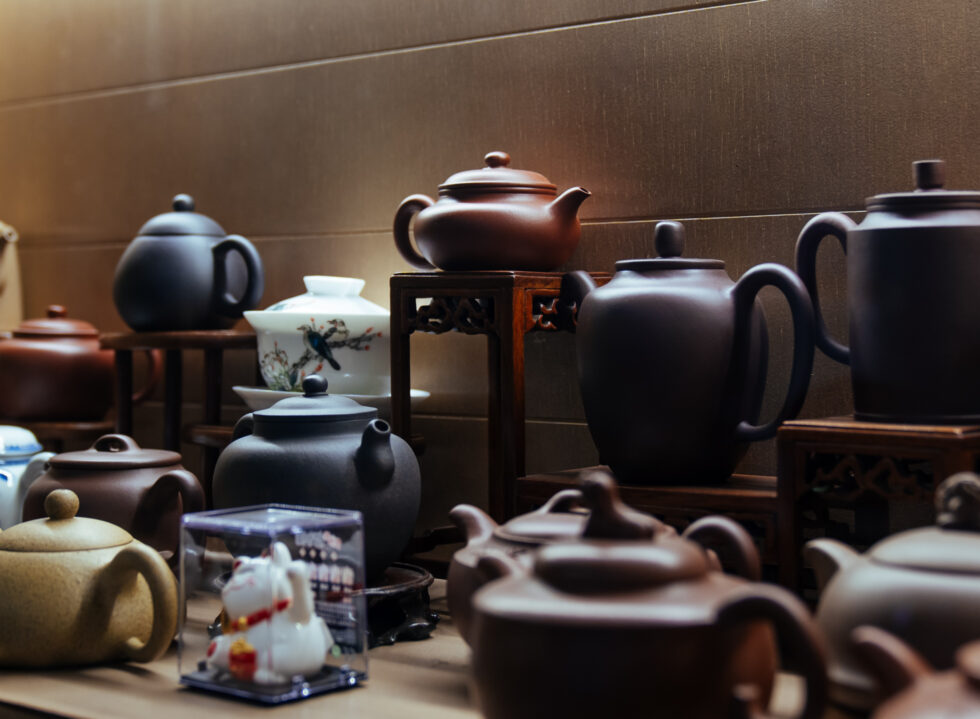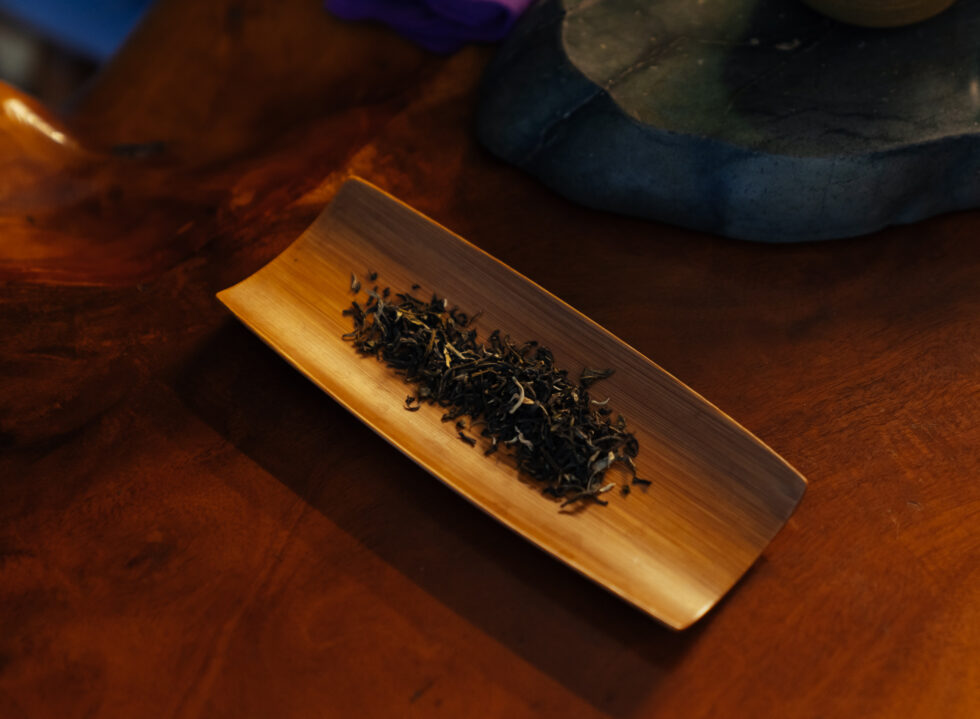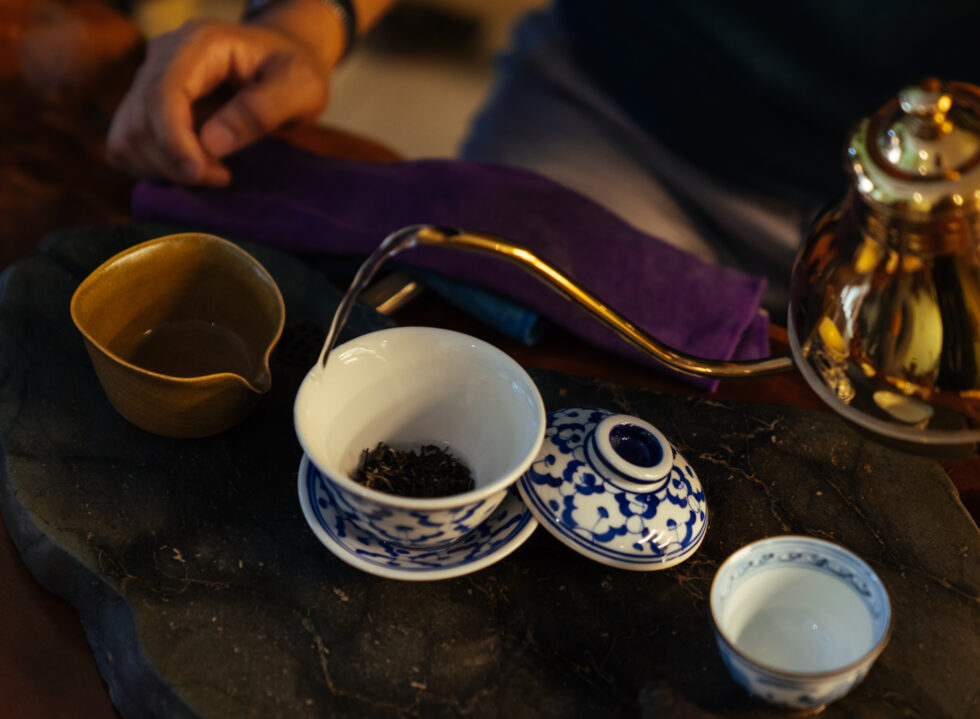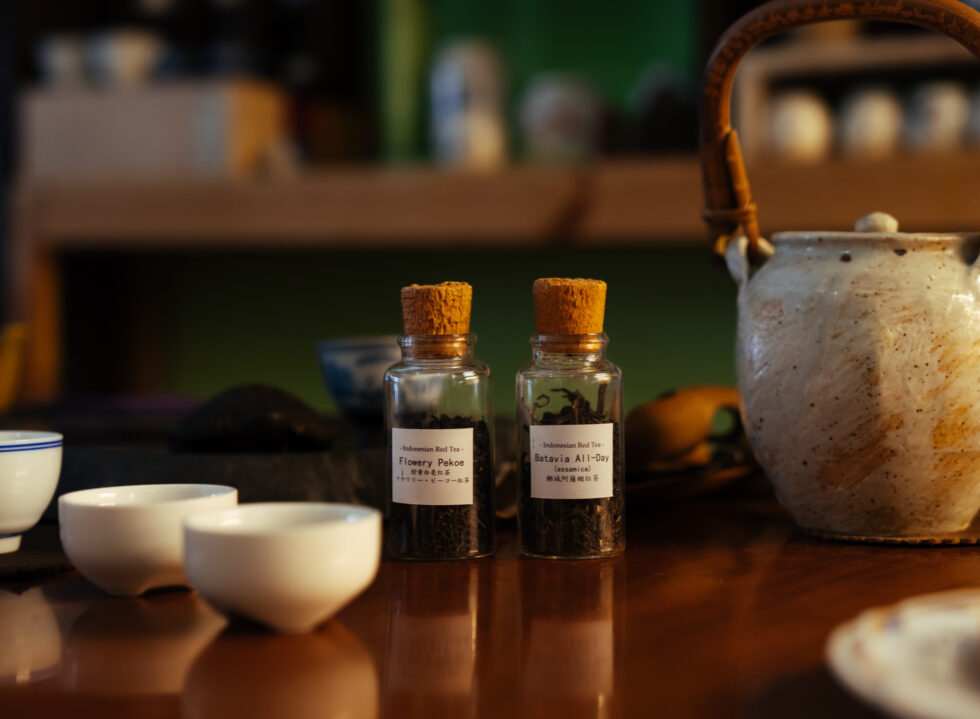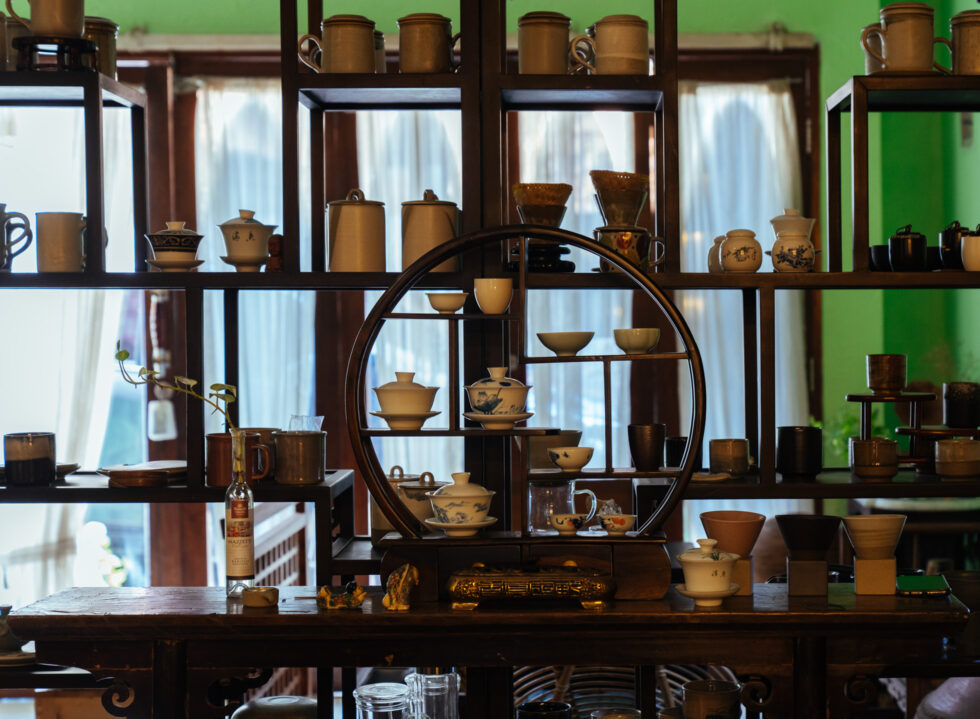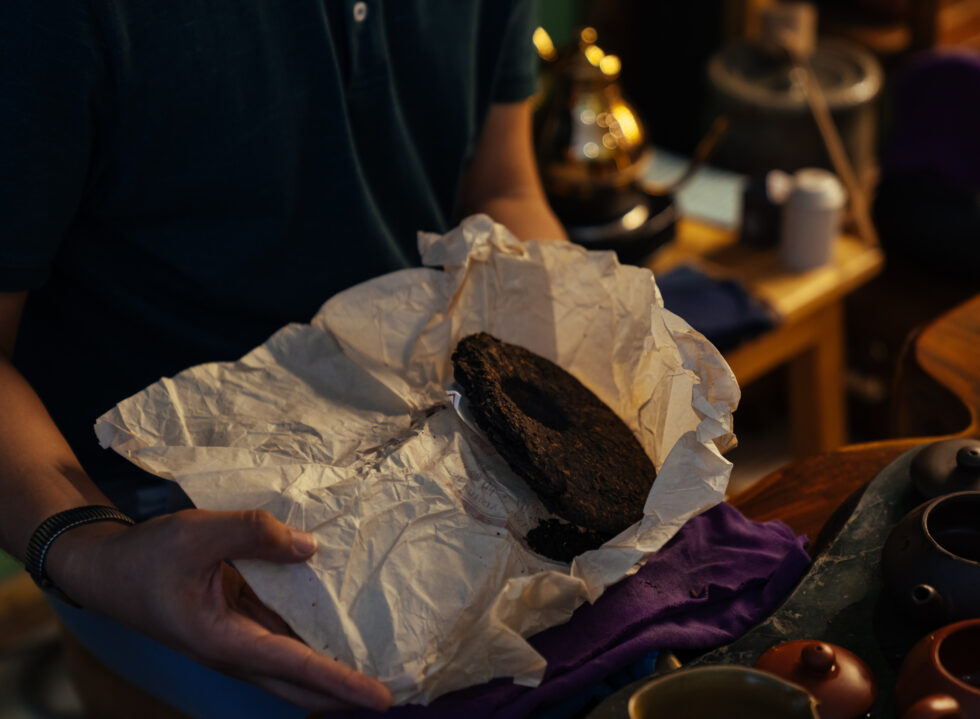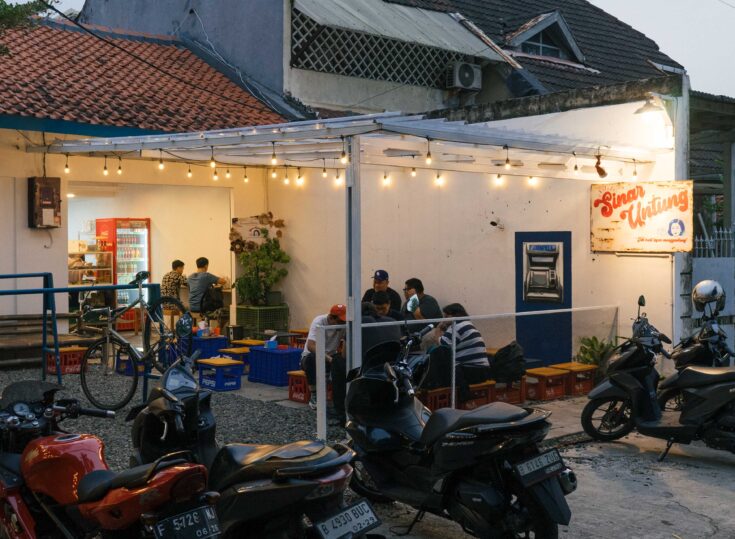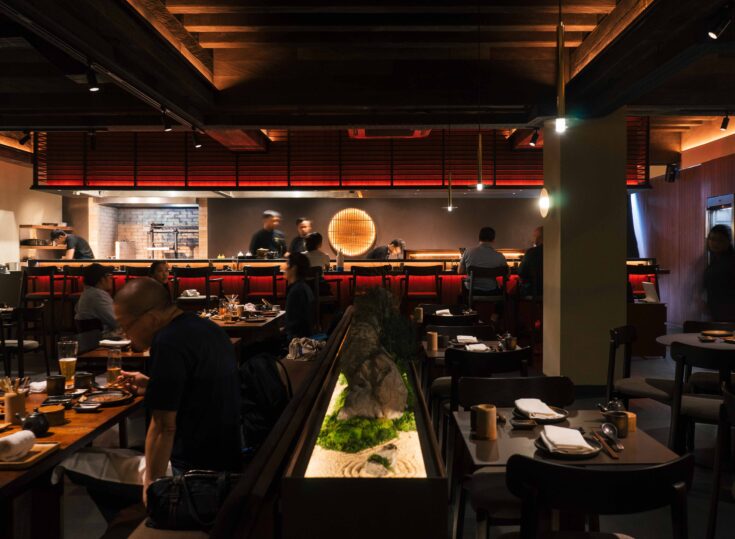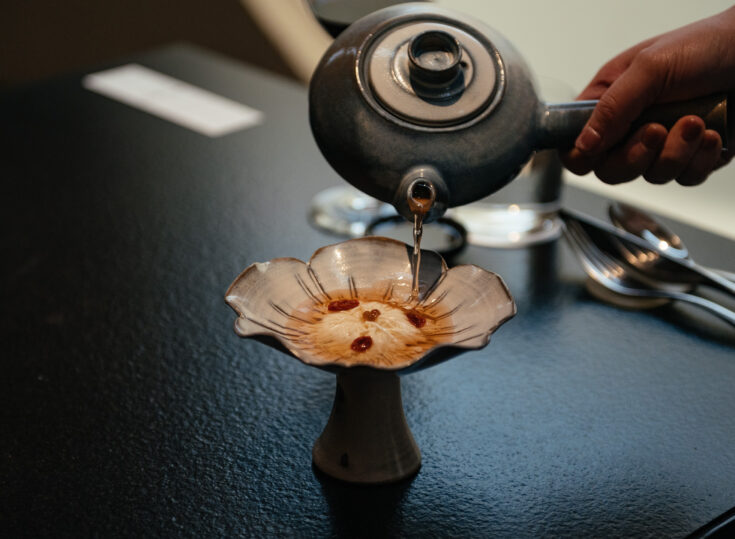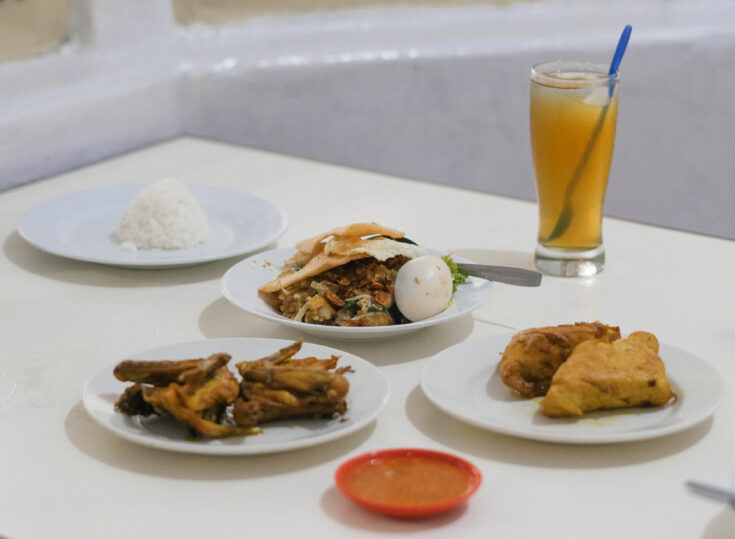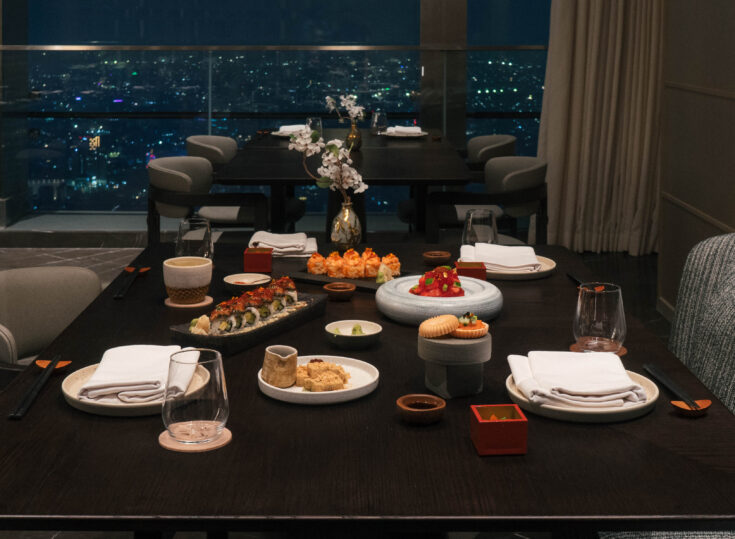When it comes to Indonesian tea, Joe Hutomo, founder of Koningsplein Co. tea house in Gunung Sahari, has found an interesting way to make the exploration more, well, interesting.
Borrowing the Chinese tea ceremony tradition of gongfu cha to his practice, he invites customers to sit around his petite wooden table as he performs a brewing method where hot water is poured over teawares and tea leaves are steeped in smaller cups to accentuate the flavour. The tea brewed is mostly local harvests, from the red tea hand-picked in Sumatra to the delicate silver needle from Bali.
To some, this can be an eye-opening experience into how tea can be prepared and indulged, a process rarely found amongst Indonesians who are more used to brewing tea bags in searing temperatures. “Tea is just another drink here,” comments Joe, whose fascination with tea started in 2006. “It’s more of a dining companion. It’s rarely enjoyed or appreciated as its own.”
Apart from his practice of gongfu cha, one of Joe’s goals with Koningsplein Co. is also to embrace Indonesian tea through stories, an element that he thinks has been missing within the drink’s development in the country. “What’s the story of tea in Batavia? Back then, I also didn’t know,” shared Joe. “Turns out during the colonial era, there was a couple who had settled in Glodok, and they were known to pour pots of tea to people [like travellers and merchants] who passed by their house. It’s stories like these that I want to bring out about local tea.”
Tea as we know it
Indonesia ranks eighth as the biggest tea-producing country in the world, with West Java still accounting for more than two-thirds of the national output. It’s also where Tea Heaven, an online speciality tea brand, is based, working together with local farmers across 20 tea plantations in Sukabumi and the surrounding province.
“There are so many variants of tea in the country, counting almost 100 subtypes alone,” said co-founder Devina Amelia. “I also found an interesting history here, and its traces can be felt until today. Ever since the Dutch cultivated tea on our land [back in the 1600s], only the good quality leaves are exported, while the ones developed in Indonesia are the tea dust—basically the leftovers. When brewed, they’re more concentrated, and this is the kind of flavour that most Indonesians know by heart.”
Joe seconded this observation. “Since we’re used to having teh poci (pot tea), the standard way of drinking tea across provinces is brewing a good amount and pouring sugar in it.” He also noted the difference in treatment for how tea is served in other tea-drinking nations. “For example in Darjeeling, India, they would see the finer details in the tea leaves and consider the brewing temperature to make the tea itself beautiful. In Indonesia, as long as the colour is red, it’s tea—the understanding is already different. What is tea? For the majority, it’s just tea.”
This is a light overview of tea’s complex intersections between cultures; rather than seeing it as a case of right or wrong, it is a way to understand how the drink develops through dynamic exchanges and social rituals in each country.
For Anindhita Hambali, founder of TEMA Tea known for its specialty tea blends, the context of how Indonesian tea came into existence plays a big role in understanding how the drink is generally regarded within Indonesian society. “Our tea is a product of colonisation, so the culture embedded from that cannot be compared to the ones in China or Japan—it’s not apple to apple,” opined the certified tea specialist. “We still need to find the identity of our tea. We will get there, but it will take time, effort and education.”
The noticeable shift
Back in May, online marketplace Tokopedia announced that tea sales almost doubled in the first quarter of this year alone compared to last year, with “black tea, green tea and Thai tea as some of the best-selling types of tea.” As a platform that houses many local tea MSMEs (micro, small & medium enterprises), it’s a positive number that shows people are looking into tea and its variety.
These players are also noticing, pointing out that enthusiasm and curiosity for specialty tea were especially evident during the pandemic. “I do see quite a number of people switching from coffee to tea [during work-from-home days]. As it turns out, there are some people who simply drink coffee due to the office environment—there’s that sense of addictiveness there. But when they’re working at home, they find that they actually don’t need coffee,” noted Joe.
More and more are also approaching tea for its well-known herbal properties, further connecting tea drinking with a healthier lifestyle and the act of slowing down. “Many are drawn to tea’s antioxidant and immune-boosting properties as they’ve become more conscious of what their body can take,” observed Devina, noting that Tea Heaven’s signature one-kilo organic green tea is still a high purchase amongst customers. “That’s also our goal, to make people healthier through tea.”
The demand is there
It’s hard to ignore the structural challenges that have long hampered the development of tea in the country. Throughout the years, prevalent issues ranged from the noticeably decreasing space to plant tea, the continuous use of old technology and ineffective farming practices, to the lack of support and guidance for the workforce—issues that would need an all-around policy intervention, ones that cannot be fought by smallholder farmers and independent business owners alone.
But it also takes tenacity of its practitioners for Indonesian tea to find its place within the general public as a drink worthy of appreciation. This is where homegrown brands like Koningsplein Co, Tea Heaven and TEMA Tea are trying to move the needle, spending efforts on communicating and interacting with the public about the state of local tea through their own way of branding and storytelling.
“Educating the public proves to be the most challenging,” said Joe. “We need a reason to love our own products. If we can keep producing quality tea and package it with a story to tell, the tea here will find its own appeal and selling power.”
In their efforts, Joe has welcomed curious expatriates and students into his tea house for a 2.5-hour tea brewing experience, where he would tell them about different brewing techniques as well as the origins and intricacies of each tea leaf; this year, Anindhita opened TEMA Tea’s first tea bar and store in Open Door, Alam Sutera, and has held over ten tea-tasting courses to an enthused crowd; while Devina is slowly growing the Tea Heaven brand by expanding its range of tea variants through its online shop.
The demand is there and the awareness is growing, even when specialty teas are still fading in the background amidst other popular tea trends and ready-to-drink creations that dominate the market. “If hotels can provide coffee capsules, they should be able to provide quality tea as well,” said Anindhita. “The way I see it, specialty tea doesn’t need to explode like coffee. It doesn’t need to look cool. But at least, we can make them available everywhere.”
